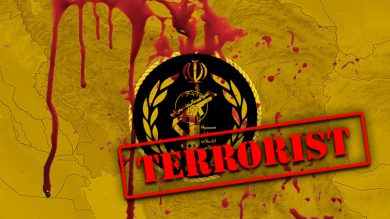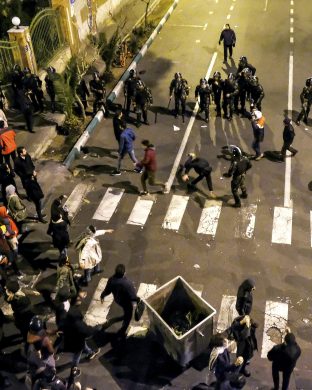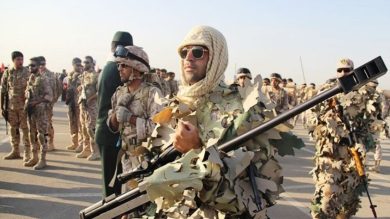Iranian women have become the driving force behind the country’s ongoing revolutionary uprising, leading protests, defying oppressive laws, and demanding freedom, justice, and equality. Their courage and resilience have transformed them into symbols of defiance, challenging the Islamic Republic and its repressive institutions, including the IRGC (Islamic Revolutionary Guard Corps).
From the streets to social media, Iranian women have played a pivotal role in shaping the movement, risking imprisonment, violence, and death to fight for a future free from dictatorship and gender oppression.
This update explores:
• The roots of the women-led protests in Iran.
• How women have organized, mobilized, and sustained the movement.
• The IRGC’s crackdown and methods of repression against female activists.
• The global impact and international support for Iranian women.
1. The Spark: How Women Ignited Iran’s Revolutionary Uprising
The death of Mahsa Amini in September 2022 at the hands of the morality police for allegedly violating hijab laws ignited nationwide protests, with women leading the charge. The slogan “Women, Life, Freedom” quickly became the rallying cry of the movement, highlighting:
• The demand for women’s rights.
• The fight for bodily autonomy and personal freedom.
• The call for an end to dictatorship in Iran.
Women have played a key role in challenging the regime since the 1979 revolution, but the Mahsa Amini protests marked a turning point, showing the world that Iranian women will not be silenced.
2. Women at the Frontlines: The Backbone of Iran’s Uprising
A. Leading the Streets Protests
Women have taken center stage in Iran’s anti-regime protests by:
• Removing and burning their hijabs in public squares as an act of resistance.
• Chanting against the regime in cities across Iran, from Tehran to Zahedan.
• Blocking streets and organizing mass demonstrations, despite the violent response from security forces.
These protests challenge not just hijab laws, but the entire system of oppression enforced by the IRGC and the Supreme Leader.
B. Organizing Resistance in Universities and Workplaces
University students, teachers, and professionals have joined the movement, with women leading efforts to:
• Stage campus protests against gender discrimination and political oppression.
• Organize strikes in schools, hospitals, and businesses in defiance of government threats.
• Defy gender segregation laws, symbolizing the broader demand for equality.
Women in various professions and age groups have joined forces, proving that the fight for freedom is not limited to any single demographic.
C. Digital Activism and the Fight Against Censorship
With severe internet blackouts and social media restrictions imposed by the regime, Iranian women have turned to digital resistance to:
• Share videos and testimonies of protests and human rights violations.
• Use VPNs and encrypted apps to bypass censorship and connect with the world.
• Mobilize support globally, ensuring that their voices reach international audiences.
The IRGC has tried to suppress this digital activism through cyberattacks and mass arrests, but Iranian women have continued to resist in creative ways.
3. The IRGC’s Brutal Crackdown on Women Protesters
The IRGC and security forces have responded to the protests with unprecedented violence, targeting women with:
• Mass arrests and imprisonment of female activists, students, and journalists.
• Torture, sexual violence, and forced confessions in Evin and Qarchak prisons.
• Live ammunition, beatings, and chemical attacks on protesters, causing injuries and deaths.
• Surveillance and harassment of families of detained or killed protesters.
Despite these brutal tactics, women have not backed down, proving that fear will not silence them.
4. The Global Impact: Women’s Resistance Inspires the World
Iranian women’s resistance has sparked global solidarity, with:
• Protests in major cities worldwide, from Berlin to Washington D.C.
• Celebrities and politicians amplifying Iranian women’s voices.
• International calls to ban the IRGC and sanction Iranian officials for human rights abuses.
Governments and human rights organizations must take stronger actions, including:
• Sanctioning IRGC leaders responsible for crimes against women.
• Providing asylum and protection for at-risk Iranian women.
• Amplifying the movement through media and diplomatic channels.
5. What’s Next: Women Will Shape Iran’s Future
The role of women in Iran’s revolutionary uprising has proven one thing:
• Iran’s future cannot be written without its women.
• Their courage is reshaping the country’s political landscape.
• They will continue to fight until they achieve full freedom and equality.
The world must stand with them and ensure that their sacrifices are not in vain.
“Women, Life, Freedom is not just a slogan. It is the blueprint for a new Iran.”
Join Our Newsletter!
Stay informed with the latest updates, news, and ways to take action in the fight for justice and global security. Sign up now to get updates delivered straight to your inbox!





